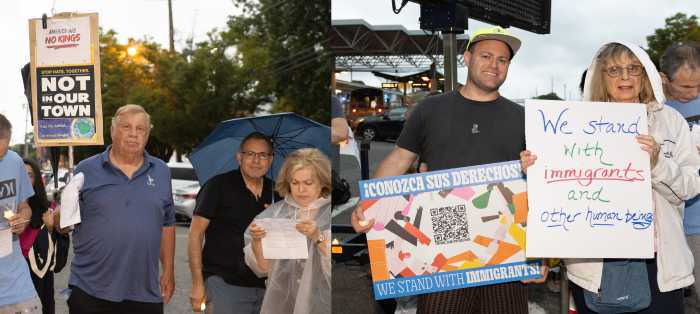 The loss of so many trees on the Great Neck peninsula in recent years from numerous severe weather events, including Super Storm Sandy, has been devastating, but Great Neck Estates continues to be at the forefront in tree preservation.
The loss of so many trees on the Great Neck peninsula in recent years from numerous severe weather events, including Super Storm Sandy, has been devastating, but Great Neck Estates continues to be at the forefront in tree preservation.
With Arbor Day being observed on Friday, the Village is reinforcing its 25-year long dedication to the beauty and importance of its trees with its continued participation in the Tree City USA program.
The Estates is one of just 10 communities on Long Island, and 103 across the state, that have met the standards for Tree City designation. Neighboring towns that have earned the designation include Garden City, Mineola and Malverne.
“Having served on the Village Board for 20 years, I am once again honored that the tradition of being a ‘Tree City USA’ designee continues the legacy of those mayors that have come before me,” said Estates Mayor David A. Fox. “We are committed to the maintenance of our trees and have required that all plans that come before our Architectural Review Board contain a full landscape plan, inclusive of tree replacement, where necessary.”
To insure this, the mayor added, “We’re most appreciative that we have Susan Weitzman, a landscape artist herself, on that Board, to monitor compliance. All of that Board’s members are committed to this principle.”
Tree City USA is the framework for sustained urban forests across the country. The program is in its 38th year and counts over 3,400 towns, cities and villages across the U.S. as members. As there are no population size requirements for a municipality to attain certification, New York City, with over eight million residents is the state’s largest, of course, while Ellicottville, in western part of the state has about 500. Great Neck Estates, in comparison, with about a 2,700 population is the 14th smallest of the state’s Tree City members.
The Estates was quick to sign on and demonstrate its commitment to tree preservation with the addition of an amendment to its code in 1989 stating that “there is a direct relationship between the preservation and the planting of trees in sufficient number in the Village and the health, safety and welfare of Village residents and that trees are related to the natural scenic and aesthetic values and the physical and visual qualities of the environment which the Village is obligated to protect.”
It was a natural progression from there for Village officials to sign on to the national program sponsored by the Arbor Day Foundation and the National Association of State Foresters. To achieve the designation, the Estates had to certify that it had a tree board or department in place, a tree care ordinance within its code, demonstration that a forestry program was included in its budget and an Arbor Day observance and proclamation.
The Commission for Conservation of the Environment acts as the tree board and was established much earlier by the Estates, in 1971, for the “preservation and improvement of the quality of the natural and manmade environment within the Village.” Members are appointed by the Mayor and must have approval of the Board of Trustees. The committee also is charged with enhancing environmental information and education.
There are several other amendments in the Village Code in strict support of tree preservation, including one that requires residents who seek permits to relocate proposed improvements if they impinge on tree preservation and strict limits on resident requests to alter trees on their properties.
“The Village is most aware of our heritage, “ said Mayor Fox, “And we’re committed to maintaining as many trees as possible through care, replenishment and education.”































